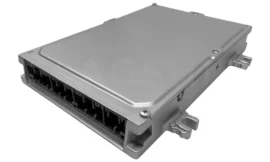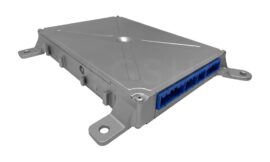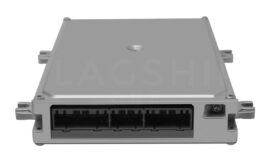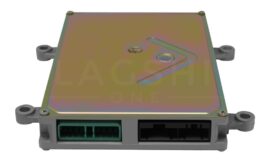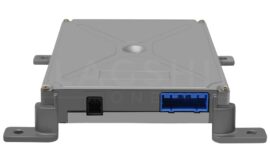The Engine Control Unit (ECU), also known as the Engine Control Module (ECM) or Powertrain Control Module (PCM), is a crucial component of any vehicle, including the Acura Legend. This intricate piece of hardware serves as the vehicle’s brain, regulating and optimizing various aspects of the engine’s performance, from fuel mixture to ignition timing. Its role is particularly critical for ensuring efficient fuel consumption, reducing emissions, and delivering optimal vehicle performance.
The installation process of an ECU in an Acura Legend begins with disconnecting the vehicle’s battery to prevent any electrical complications. The old ECU is located, generally under the passenger’s side dashboard or engine compartment, and carefully removed. The replacement ECU is then connected ensuring all the wires are properly attached to their corresponding terminals. After the new ECU is secured in place, the battery is reconnected. It’s recommended to have a professional mechanic perform the installation, to ensure the process is done correctly and safely.
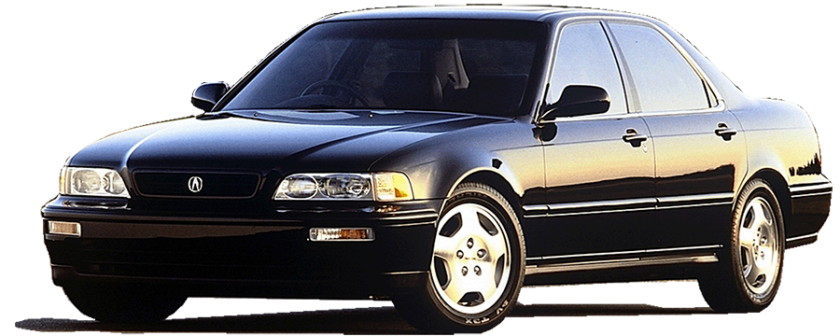
Tools and Materials Needed
- A new Engine Control Module (ECM) or Powertrain Control Module (PCM) for Acura Legend
- Ratchet set
- A pair of gloves
- Screwdriver set
- Electrical contact cleaner
- Anti-static wrist strap
- Battery wrench
- Safety glasses
- Wire brush for battery terminals
- Torque wrench
- Digital multimeter (optional)
- Vehicle service manual (for reference)
Preparing Your Acura Legend for the New ECU
Before diving into the installation process, it’s important to adequately prepare your vehicle. This involves a few key steps:
- Disconnecting the Battery: Start by opening the hood of your Acura Legend and locating the vehicle’s battery. Please ensure you’re wearing the safety glasses and gloves at all times during this process. Use your battery wrench to loosen the nut on the negative battery terminal first. Once it’s loose, pull the negative terminal off the battery. Repeat the same process for the positive battery terminal.
- Clean the Battery Terminals: With the battery disconnected, it’s a good practice to clean the terminals with your wire brush. This step ensures a good connection when the battery is reconnected after installing the new ECM or PCM.
- Prepare Your Tools: Gather all your tools, including your ratchet set, screwdriver set, and anti-static wrist strap. The latter is crucial to avoid any static discharge that could potentially damage the new ECM or PCM.
Removing the Old ECU
- Locate the Old ECU: The first step in removing the old ECU (ECM or PCM) is to find its location. In most Acura Legends, the ECU is generally located under the passenger’s side dashboard or in the engine compartment. If you’re having trouble finding it, refer to your vehicle’s service manual.
- Remove the ECU: After locating the ECU, the next step is to disconnect the wiring harness from it. Carefully unplug each connection, taking care not to pull the wires. Once all wires are disconnected, you can unscrew and remove the ECU.

Installing the New ECU
- Prepare the New ECU: Before installing the new ECU, ensure your anti-static wrist strap is on. This will help to prevent any static electricity from damaging the new module.
- Install the New ECU: Position the new ECU where the old one was located, aligning the screw holes. Once in place, secure it using your ratchet set and the screws that came with your new ECU. Ensure it is firmly secured but avoid overtightening the screws.
- Connect the Wires: Reconnect the wiring harness to the new ECU, ensuring that each wire is securely attached to its corresponding terminal.
- Reconnect the Battery: Once the new ECU (ECM or PCM) is installed, you can reconnect the battery. Begin with the positive terminal, and then connect the negative terminal. Tighten each terminal using your battery wrench.
- Test Your Vehicle: Finally, it’s time to test your Acura Legend. Start your vehicle and let it idle for a few minutes. Pay attention to any warning lights on your dashboard and monitor the vehicle’s performance during test drives. If everything seems normal, the installation was successful. If not, consult a professional mechanic right away.
Post-Installation Steps
- Check for Warning Lights: After installing the new ECU (ECM or PCM) and starting your Acura Legend, keep a close eye on the dashboard. If any warning lights illuminate, it could indicate an issue with the installation or the ECU itself.
- Test Drive Your Vehicle: Take your vehicle for a test drive to ensure the new ECU is functioning properly. Pay attention to the performance of your car – how it accelerates, brakes, and handles overall. Any abnormal behavior could suggest a problem with the ECU.
- Monitor Fuel Efficiency: As the ECU plays a key role in optimizing fuel consumption, monitor your vehicle’s fuel efficiency after the installation. A noticeable decrease could indicate that the ECU is not working as it should.
- Listen for Unusual Noises: Unusual noises coming from your vehicle’s engine could be a sign of a problem. While these noises may not be directly related to the ECU, they should not be ignored as they might indicate other problems.
- Consult a Professional if Necessary: If you notice any persistent issues or concerns after the ECU installation, it’s advisable to consult a professional mechanic immediately. They can help diagnose and resolve any problems that might have arisen during or after the ECU installation.
Conclusion
In summary, the process of ECU installation involves several key steps. It starts with preparing your Acura Legend, which includes disconnecting and cleaning the battery terminals, and gathering all the necessary tools. . This comprehensive process ensures the optimal performance of your Acura Legend after replacing the ECM or PCM.
DIAGNOSTIC TROUBLE CODES THAT RELATES TO THE PCM
Diagnostic Trouble Codes (DTCs) are codes that are stored by a vehicle’s on-board diagnostic (OBD) system when it detects a fault with the vehicle’s powertrain system.
P0100: Mass or Volume Air Flow Circuit Malfunction
P0101: Mass or Volume Air Flow Circuit Range/Performance
P0102: Mass or Volume Air Flow Circuit Low Input
P0103: Mass or Volume Air Flow Circuit High Input
P0110: Intake Air Temperature Circuit Malfunction
P0113: Intake Air Temperature Sensor 1 Circuit High
P0172: System Too Rich (Bank 1)
P0120: Throttle/Pedal Position Sensor/Switch “A” Circuit Malfunction
P0130: Oxygen Sensor Circuit Malfunction (Bank 1, Sensor 1)
P0131: Oxygen Sensor Circuit Range/Performance (Bank 1, Sensor 1)
P0132: Oxygen Sensor Circuit High Voltage (Bank 1, Sensor 1)
P0133: Oxygen Sensor Circuit Slow Response (Bank 1, Sensor 1)
P0134: Oxygen Sensor Circuit Intermittent (Bank 1, Sensor 1)
P0135: Oxygen Sensor Circuit Malfunction (Bank 1, Sensor 2)
P0136: Oxygen Sensor Circuit Range/Performance (Bank 1, Sensor 2)
P0137: Oxygen Sensor Circuit Low Voltage (Bank 1, Sensor 2)
P0138: Oxygen Sensor Circuit High Voltage (Bank 1, Sensor 2)
P0139: Oxygen Sensor Circuit Intermittent (Bank 1, Sensor 2)
P0140: Oxygen Sensor Circuit Malfunction (Bank 2, Sensor 1)
P0141: Oxygen Sensor Circuit Range/Performance (Bank 2, Sensor 1)
P0142: Oxygen Sensor Circuit Low Voltage (Bank 2, Sensor 1)
P0143: Oxygen Sensor Circuit High Voltage (Bank 2, Sensor 1)
P0144: Oxygen Sensor Circuit Intermittent (Bank 2, Sensor 1)
Here is a list of some diagnostic trouble codes (DTCs) that begin with the letter “U” and could potentially indicate a fault with the powertrain control module (PCM) in a vehicle:
U0100: Lost Communication with Engine Control Module/Powertrain Control Module
U0101: Lost Communication with Transmission Control Module
U0102: Lost Communication with Transfer Case Control Module
U0103: Lost Communication with Throttle Actuator Control Motor Circuit
U0104: Lost Communication with Throttle Actuator Control Motor Circuit Range/Performance
U0105: Lost Communication with Throttle Actuator Control Motor Circuit Low
U0106: Lost Communication with Throttle Actuator Control Motor Circuit High
U0107: Lost Communication with Throttle Actuator Control Motor Circuit Intermittent
U0108: Lost Communication with Throttle Actuator Control Motor Circuit Open
U0109: Lost Communication with Throttle Actuator Control Motor Circuit Short to Ground
U0110: Lost Communication with Throttle Actuator Control Motor Circuit Short to Battery
U0111: Lost Communication with Throttle Actuator Control Motor Circuit Short to Power
U0112: Lost Communication with Throttle Actuator Control Motor Circuit Short to Ground
U0113: Lost Communication with Throttle Actuator Control Motor Circuit Short to Battery
U0114: Lost Communication with Throttle Actuator Control Motor Circuit Short to Power
U0115: Lost Communication with Throttle Actuator Control Motor Circuit Failure
U0116: Lost Communication with Throttle Actuator Control Motor Circuit Range/Performance
Note: These codes are just a small sample and there are many other DTC codes that could potentially indicate a fault with the PCM. Additionally, the specific codes that are relevant will depend on the make and model of the vehicle. It is important to consult the vehicle’s service manual or a professional mechanic for more information about interpreting DTC codes.




